Discover Coventry: A Journey Through History, Landmarks, and Culture
Coventry is a city rich in history, resilience, and cultural heritage. From its medieval roots and iconic landmarks to its role in the industrial revolution and post-war revival, Coventry has a story to tell at every corner.
This article supports the work of Child Friendly Cov, specifically their Be and Feel Loved Pledge, which is about encouraging children to discover and learn about Coventry’s history, landmarks, and cultural heritage.
Discover Coventry: A Journey Through History, Landmarks, and Culture
Coventry is a city with a deep and diverse history, dating back over 2,000 years. Today, its museums and landmarks offer a glimpse into this rich past, allowing visitors to step back in time and explore different eras of the city’s evolution.
Lunt Roman Fort (c. 60 AD)
Lunt Roman Fort is a partially reconstructed turf and timber Roman fort dated to AD 60, with a unique 'gyrus', or circular training area for horses, a rebuilt granary, timber gateway and fort ramparts. The fort at Lunt was built at the time of Queen Boudicca's revolt against the Romans in Britain, possibly as a supply depot and army headquarters. Visit Lunt Roman Fort.
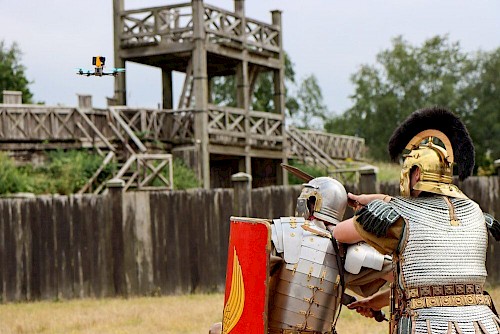
Charterhouse (14th Century)
Three historic floors of historic storytelling, surrounded by a halo of beautiful green space filled with wildlife. Charterhouse is one of Coventry’s most important heritage sites and the centre of Charterhouse Heritage Park. The Grade I listed, 14th century building has quite the story to share, and has served many different purposes since it was first founded in 1381. Visit Charterhouse.

St Mary's Guildhall (14th Century)
Coventry's hidden gem, St Mary's Guildhall, is one of the finest Guildhalls in the country, used as a meeting place for Coventry’s powerful merchant guild. A rare survivor of the English Civil War and the Blitz, St Mary’s Guildhall is known for its beautifully preserved interiors, stained glass windows, and an impressive tapestry from the 1500s. Visit St Mary's Guildhall.
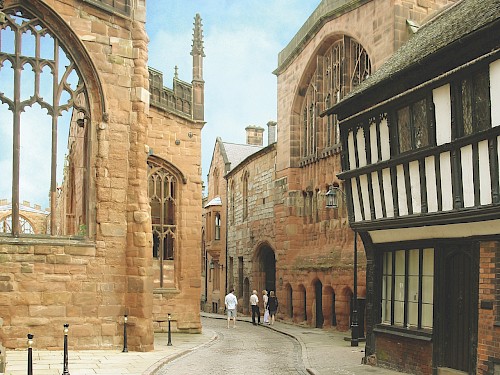
Weavers House (16th Century)
One of the Black Swan Terrace cottages in Spon End has been restored to show how it would have looked in 1540. This shows how John Croke, a Coventry narrow-loom weaver and his family would have lived and worked. You can also see a replica of the loom that he would have used. About Weavers House.
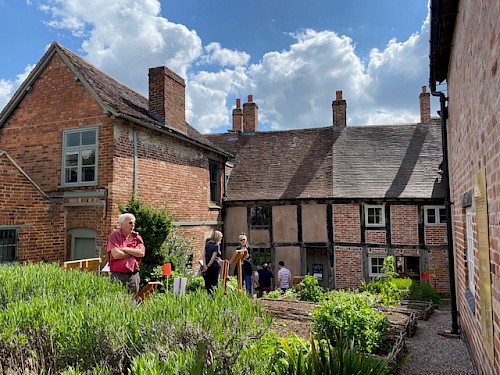
Coventry Cathedral (20th Century)
One of Coventry’s most iconic landmarks, Coventry Cathedral is a symbol of both destruction and peace. The ruins of the medieval cathedral, destroyed in the Blitz of 1940, stand beside the striking modern cathedral designed by Sir Basil Spence, reflecting the city’s resilience and commitment to reconciliation. Visit Coventry Cathedral.

Coventry Blitz Museum (20th Century)
Explore what life was like in wartime Coventry... Located in the corner of the Cathedral Ruins, the Blitz Museum is a treasure trove of 1940's memorabilia and artefacts. Visitors will learn more about the Coventry Blitz on 14th November 1940 in the period school room, and will then travel through a typical house of the time and learn more about life in this era from one of their friendly and knowledgeable volunteers. Visit Coventry Blitz Museum.
Coventry: The Birthplace of British Transport
Coventry has played a crucial role in the development of Britain’s transport industry, earning a reputation as the "Motor City" of the UK. From pioneering bicycle manufacturing in the 19th century to leading the automotive and aerospace industries in the 20th century, Coventry’s engineering excellence has shaped the way people travel.
Coventry Transport Museum
One of the city’s most popular attractions, the Coventry Transport Museum houses the largest publicly owned collection of British vehicles in the world. Visit Coventry Transport Museum. Key highlights include:
- The Thrust2 and ThrustSSC, the world’s fastest cars that set land speed records.
- A stunning collection of classic British cars, including early Jaguars, Triumphs, and Rovers.
- A replica of a Victorian bicycle workshop, showcasing Coventry’s role in the bicycle industry.
- A powerful Blitz experience, highlighting how World War II affected Coventry’s transport and industry.

Midland Air Museum
Located near Coventry Airport, the Midland Air Museum celebrates the city’s contributions to aviation. Visit Midland Air Museum. The museum features:
- A rare Avro Vulcan bomber, one of Britain’s most iconic Cold War aircraft.
- Aircraft designed and built by Coventry-based companies, including Armstrong Whitworth.
- A collection of jet engines and aviation memorabilia, showcasing the city’s engineering expertise.

Coventry's History of Music
Coventry has a rich and diverse musical history, influencing both the UK and the world with its unique sounds.
Coventry Music Museum
The Coventry Music Museum, founded by music historian Pete Chambers, is a must-visit for fans of the city’s musical heritage. Visit Coventry Music Museum. The museum covers:
- The birth of 2-Tone, with memorabilia from The Specials, The Selecter, and other key bands.
- Interactive exhibits, including a replica of Jerry Dammers’ home studio.
- Coventry’s wider musical history, from 1960s rock bands to its role in electronic and indie music.
- The city’s modern music scene, showcasing up-and-coming Coventry artists.
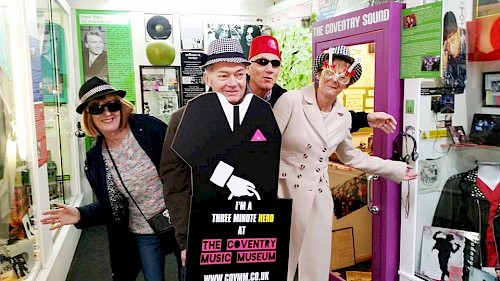
2-Tone Village
Coventry is best known for being the birthplace of the 2-Tone movement, a genre that blended ska, punk, reggae, and new wave, emerging as a major force in British music in the late 1970s and early 1980s. It was not just about the music—it carried a strong message of racial unity and social justice, reflecting the multicultural spirit of the city. Visit 2-Tone Village.
Key Figures in 2-Tone:
- The Specials: Formed in Coventry in 1977, they became the leading force behind the 2-Tone movement, with hits like Ghost Town and Too Much Too Young.
- The Selecter: Another Coventry-based 2-Tone band, known for songs like On My Radio and Three Minute Hero.
- 2-Tone Records: Founded by The Specials’ Jerry Dammers in Coventry, the label helped launch the careers of bands like Madness, The Beat, and The Bodysnatchers.

Coventry's History of Art and Craftsmanship
Coventry has a long and rich artistic history, shaped by its skilled craftsmanship, industrial innovation, and modern creative movements.
Herbert Art Gallery & Museum
The perfect place to delve into Coventry’s history and engage with art and culture, it plays a crucial role in preserving and promoting the city’s artistic heritage. Visit Herbert Art Gallery & Museum. Key Highlights:
- Medieval and Pre-Raphaelite Art: The gallery houses historic artworks that reflect Coventry’s medieval past and the influence of the Pre-Raphaelite movement.
- 20th-Century and Modern Art: Featuring works by leading British artists, including pieces inspired by Coventry’s post-war regeneration.
- Contemporary Exhibitions: The gallery regularly hosts contemporary artists, reflecting the city’s evolving creative scene.
- The Blitz and Art: Coventry’s devastation during World War II inspired many artists, and the gallery features works that depict the impact of war on the city.
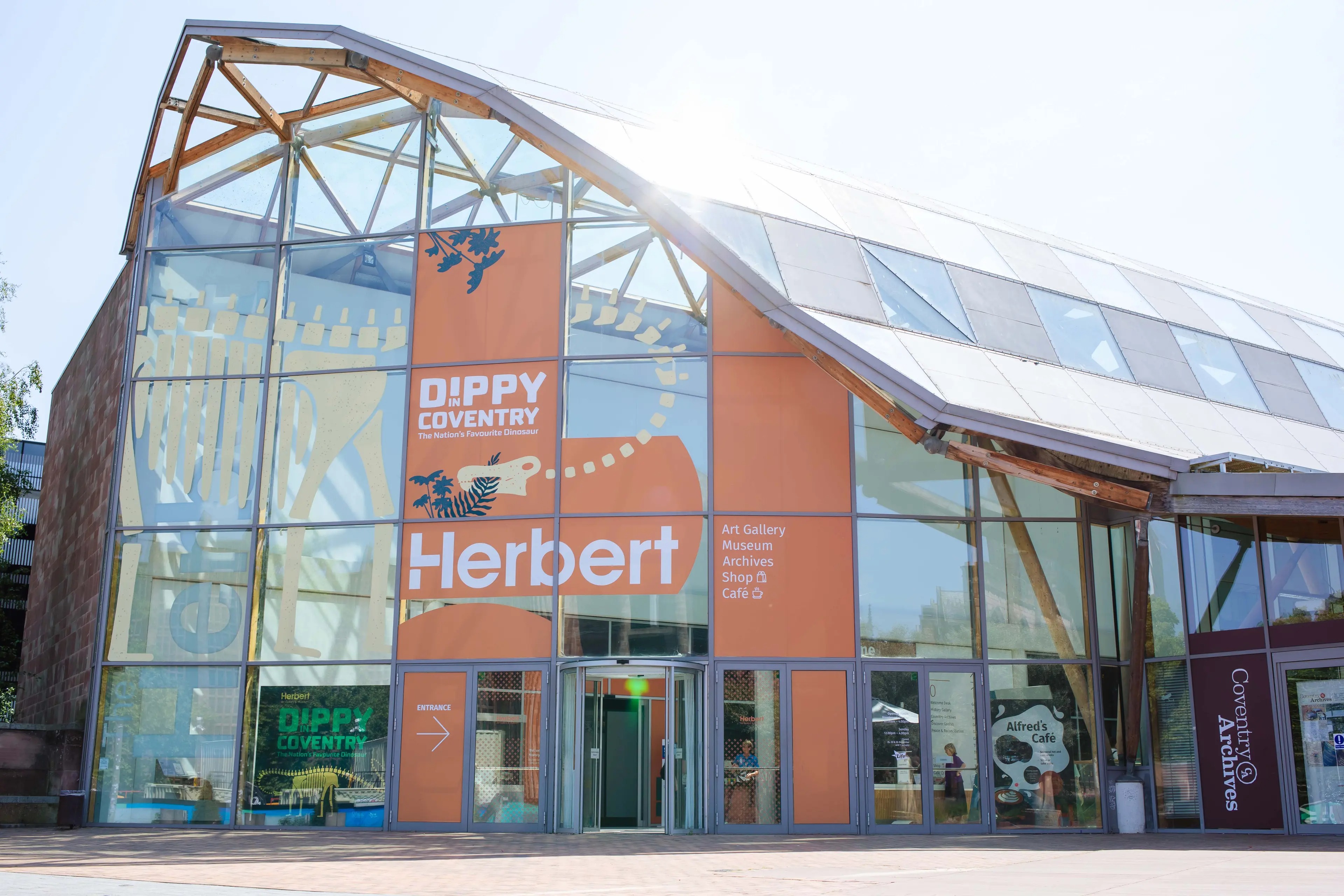
Coventry Watch Museum
In the 18th and 19th centuries, Coventry became a leading center for watch and clockmaking, producing some of the finest timepieces in Britain. Coventry Watch Museum is a volunteer led project showcasing Coventry's wonderful history in watch making. Learn about the history of watchmaking and the role it played in the industrial development of Coventry. Visit Coventry Watch Museum.
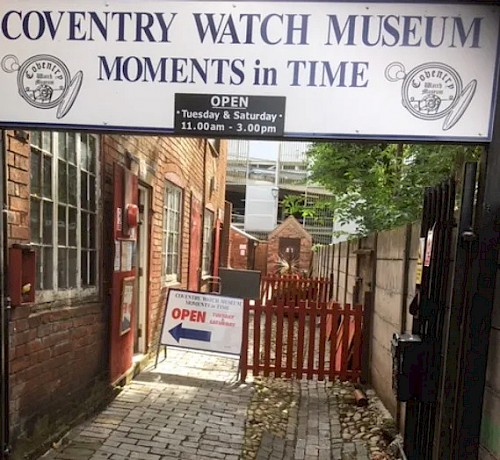
We hope you've enjoyed this journey through Coventry's History, Landmarks, and Culture. There are lots of amazing Museums in Coventry where you can find out more.
Visit www.coventryrocks.co.uk to find things to do in the local area - from Groups and Classes, to Family Events, Local attractions, Kids Parties, and more!
Don't forget to follow us on Facebook and Instagram to discover things to do in the local area!













